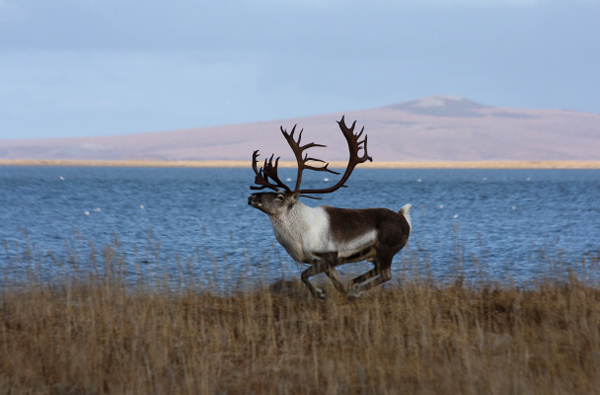
Kotzebue residents expressed concerns last week that data used by the Alaska Department of Fish and Game to overturn the sport hunter ban in Unit 23 may be incomplete and misleading.
The Federal Subsistence Board held the meeting July 18 to collect opinions regarding the special action to overturn the exclusion of non-resident caribou hunters in Unit 23.
Unit 23, about 25 miles north of Kotzebue, is home to the Western Arctic Caribou Herd, which many use for subsistence and sport hunting.
During the public comment session, tensions were high in the Northwest Arctic Borough, or NWAB.
“I apologize for taking time, but I am addressing my way of life,” said Walter Sampson, a Kotzebue subsistence hunter, who was the first to speak during public comment. “Putting food on the table for my family is important. I’m not worried about bureaucracy.”
Among the main issues raised were challenges to the data, which Lance Kramer of Kotzebue, who with support of other subsistence hunters, questioned the new data’s significance and completeness.
Fish and Game stated that the newly gathered information was “sufficient” for passing the special action to allow sport hunting, during its comment period at the meeting.
Kramer said the term “sufficient” is too generous a description, however, and said he isn’t the only one to think so.
“I even talked to the biologist who put this together, and he said that that word (‘sufficient’ is subjective,)” he said.
Kramer, a NWAB subsistence mapper, is skeptical about the accuracy of the cited 82 percent calf survival rate in particular.
That rate being cited to repeal the subsistence board’s decision was measured by tracking 31 collared calves migrating from Onion Portage to their winter resting grounds. The survival rate comes from how many calves survive that journey.
Starting at Onion Portage skips a lot of the migration that caribou undergo, Kramer argued.
“The problem is that that’s not where the calves are declining,” he said. “The calves are declining in their summer grounds through their migration route.”
Kramer’s second contention is with Fish and Game’s caribou population count, an estimated 206,000. He said this number is just an estimate.
The official population count won’t come until this fall.
The Western Arctic Caribou Herd Working Group, which includes Fish and Game, stipulates that at 200,000 caribou, non-subsistence hunters must be banned from Unit 23.
“Getting to the edge of the cliff can be scary, but it’s not the same as falling over the edge,” said Larry Bartlett, a non-resident hunter.
Nearing the 200,000 edge is enough reason for concern, Kramer said. He says that if the herd is declining, even in a slower or more leveled-off way, the state should still be concerned about the herd.
Some people at the meeting believe if the special action goes through, tension between sport and subsistence hunters will increase. Kramer thinks both groups won’t share the same territories because caribou have migrated to lands sport hunters couldn’t access if banned from Unit 23.
The Federal Subsistence Board will make their decision on whether the exclusion of non-subsistence hunters is permanent sometime this fall.
